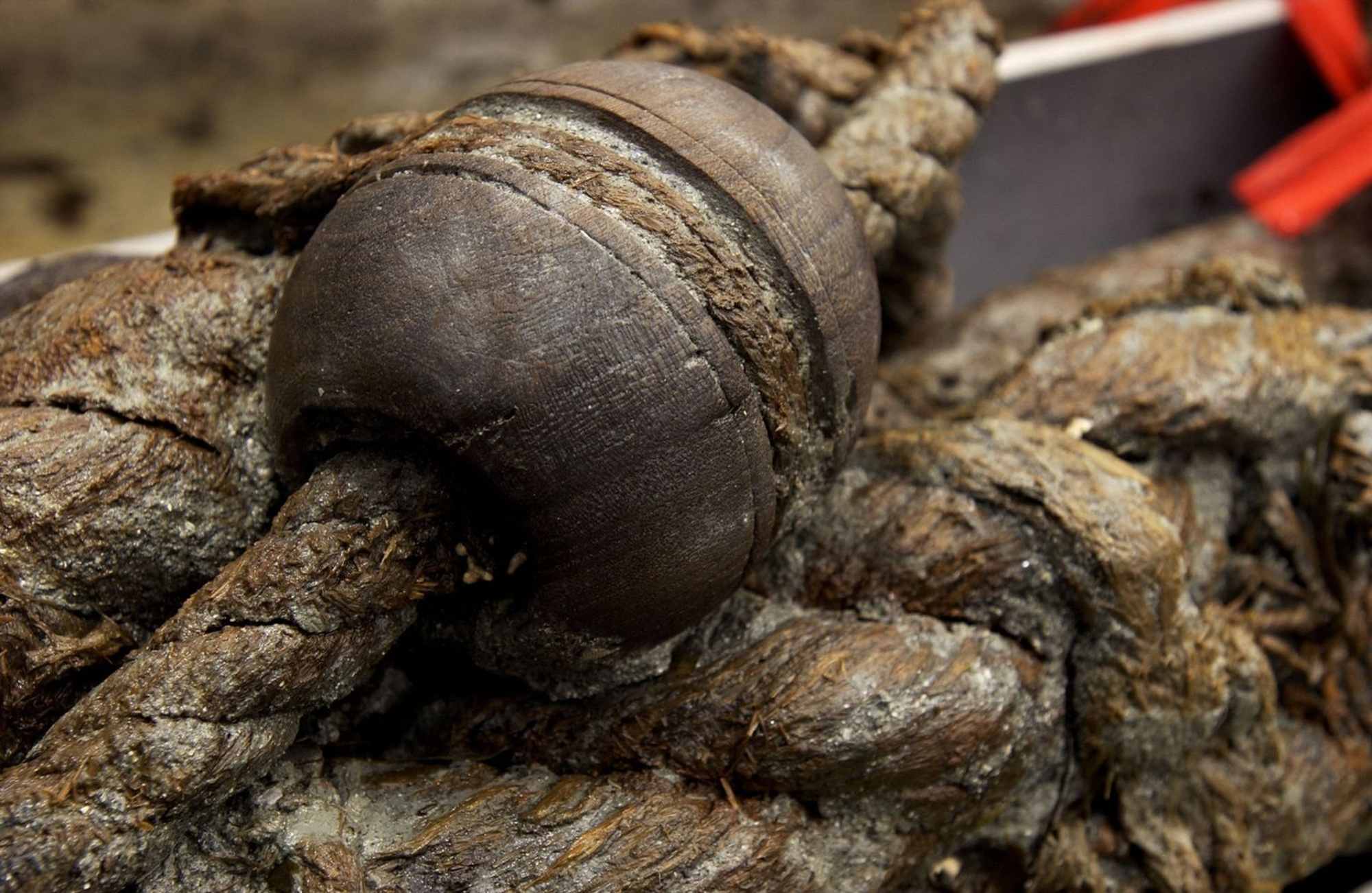
- Home
- Shipbuilding
- Rigging for the two ships
When the wreck of a large frigate is discovered, it is rare to find the major elements of its rigging, i.e. the sails and masts (bowsprit, foremast, mainmast and mizzenmast). Unfortunately, the Natière wrecks are no exception to this rule. Once again, researchers were forced to turn to images, shipbuilding treatises and pictorial representations – some of them quite detailed – from the period. The smaller rigging elements are, however, more anonymous and largely absent from these sources; they include blocks, deadeyes, trucks, parrels, belaying-pins, dead blocks, small toggles and bull's eyes – all indispensable for handling a ship's sails. We know that a ship's riggers and sailmakers needed dozens of kilometres of hemp rope, that nearly three hundred blocks were in simultaneous use aboard, and that an equal number of replacement blocks were stored below. The excavations of both the Dauphine and the Aimable Grenot yielded enormous amounts of these rigging elements – 579 items out of a total of 3,017 inventoried objects. They are the second-best represented group of artefacts, right after food and drink storage table and kitchenware objects.

